A Comprehensive Look at Baroque Bedroom Furniture
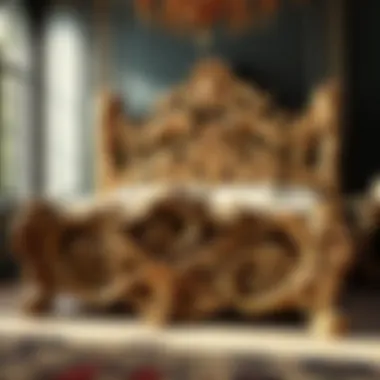
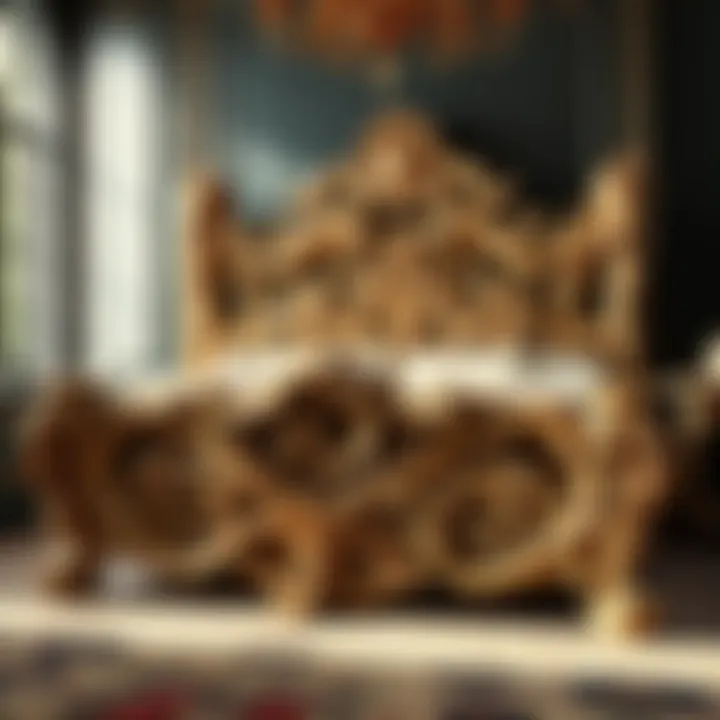
Intro
In the realm of interior design, few styles evoke the same degree of opulence and artistry as Baroque. Originating in the late 16th century in Italy, Baroque design is characterized by its grandiosity, intricate detailing, and a profound appreciation for beauty. In a world where minimalism often reigns, Baroque bedroom furniture provides a refreshing alternative, celebrating history while embodying luxury in a truly unique manner. This article takes you on an exploration of Baroque bedroom furniture, focusing on its rich history, distinctive design elements, and practical applications for today’s interiors.
As we navigate this topic, you’ll discover how the craftsmanship behind Baroque pieces can still resonate within the contemporary home. The influence of Baroque style extends beyond mere aesthetics; it is about embracing a lifestyle, a sense of comfort mixed with elegance. So, let’s embark on this journey through color palettes, popular styles, and ways to integrate these lavish designs into your own personal space.
The Historical Context of Baroque Furniture
Understanding the historical context of Baroque furniture is akin to tracing the roots of a magnificent tree; its branches flourish based on the depth and richness of its origins. The Baroque period, roughly spanning from the late 16th to the early 18th century, marked a pivotal shift in both art and design. This era wasn’t merely about opulence; it embodied the tumultuous social, political, and cultural tides of its time.
Origins and Era
The Baroque style emerged after the Renaissance, a period that celebrated symmetry and balance. In contrast, Baroque embraced grandeur and drama. Emerging from Italy, particularly under the patronage of the Catholic Church during the Counter-Reformation, this style aimed to impress its audiences. It was a response to both the socio-political landscape and the insatiable appetite for luxury among the nobility. The cultural backdrop then featured a clash of ideas marked by political upheaval and emerging scientific discoveries, which greatly influenced the sensibilities of artisans.
Cultural Influences
Culture during the Baroque period was a tapestry of influences woven with threads of religion, philosophy, and ever-shifting power dynamics. This period saw an amalgamation of styles from across Europe - Italian, French, and Spanish influences blended seamlessly into furniture design. The intricate carvings, lavish embellishments, and lavish use of textiles reflected the social stratification of the time. As decrees from monarchs mandated grandeur, artisans often borrowed themes from mythology and nature, transforming everyday furniture into storytelling pieces that echoed the cultural maxims of their respective regions.
"Baroque furniture was not just an expression of style but a reflection of society’s status and ambitions."
Key Figures and Artisans
The furniture from the Baroque period wouldn’t have reached its zenith without the skill and vision of remarkable artisans who are often overlooked. Among them, Andrea Palladio and his successors expanded the reach of Baroque principles into furniture design. Artisans like Thomas Chippendale in England incorporated elaborate decorative elements that resonated with the burgeoning interests of the aristocracy.
Individual craftsmen had their unique signatures, often marked by the locale of their workshop. For instance, Italian craftsmen were renowned for their elaborate inlays and gilt work, while the French artisans distinguished themselves by their attention to proportion and flamboyance. These artisans, driven by both patronage and artistic expression, shaped the identity of Baroque furniture and left an indelible mark on the aesthetic landscape.
In essence, the historical context surrounding Baroque furniture provides an essential framework for understanding its design, craftsmanship, and enduring appeal. As house owners and decorators explore the nuances of Baroque designs, recognizing these historical dimensions can elevate their appreciation and application in modern settings.
Characteristics of Baroque Bedroom Furniture
Understanding the characteristics of Baroque bedroom furniture is crucial for anyone looking to integrate this captivating style into their home. The Baroque period, known for its flamboyant designs and ornate details, has left a lasting impact on furniture design. This section will delve into the defining elements of Baroque furnishings, including design elements, material choices, and color palettes, which are integral to creating a space that embodies the elegance and sophistication of this historical style.
Design Elements
Curvilinear Forms
Curvilinear forms are a hallmark of Baroque furniture design. These sweeping, fluid lines create an organic flow, setting Baroque furniture apart from the more rigid structures of earlier periods. The use of curves not only enhances the aesthetic appeal but also adds a sense of movement to the piece. This feature gives furniture a lively character, making it a popular choice for bedrooms that aim for a dramatic yet inviting atmosphere. While these forms can make furniture feel less linear and more approachable, their soft nature may not always fit in contemporary spaces that prioritize minimalism.
Intricate Carvings
Intricate carvings are another defining characteristic of Baroque furniture. Artisans took great pride in their ability to transform raw wood into elaborate works of art. This craftsmanship can be seen in the deep reliefs and detailed embellishments that adorn tables, beds, and cabinets. The key attribute here is the attention to detail that makes every piece a conversation starter. However, the delicate nature of these carvings requires careful maintenance to prevent wear and tear, which is something to consider when investing in such pieces.
Ornamental Details
Ornamental details in Baroque bedroom furniture elevate its luxurious nature. From gilded accents to lavish upholstery patterns, these elements serve to enhance the grandeur associated with Baroque design. One of the standout features is the combination of different textures and finishes, which contribute to a rich visual experience. The downside, however, is that an overload of ornamentation can overwhelm a space, making it essential to strike a balance between decoration and elegance.
Material Choices
Wood Varieties
The choice of wood in Baroque furniture is significant, as it enhances durability while providing an elegant finish. Common choices include walnut and mahogany, prized for their rich colors and grain patterns. This selection not only speaks to the functionality but also serves aesthetic purposes, providing a warm backdrop for intricate designs. However, the heavier weight of these woods can pose challenges in terms of mobility and placement within a room.
Upholstery Fabrics
Upholstery fabrics play a critical role in the comfort and appearance of Baroque furniture. Luxurious fabrics such as velvet, silk, and brocade are often utilized, adding an opulent touch to chairs and beds. These materials not only offer comfort but also help in creating a sensory experience that complements the overall design. Yet, it's worth noting that these fabrics can require special care, as they may be prone to staining or fading over time.
Metal Accents
Metal accents, such as brass or bronze, are often used in Baroque furniture to enhance visual interest. These details can be found in handles, legs, or inlays, providing a beautiful contrast to the wood. One significant advantage of metal accents is their durability; they can withstand the test of time quite well. However, they may not complement all modern interior styles and could clash if not chosen thoughtfully.
Color Palette
Rich Tones
Rich tones characterize the Baroque aesthetic, often featuring deep hues like burgundy, gold, and emerald green. The use of these colors fosters a sense of luxury and depth in the bedroom. This striking palette allows for maximum impact with minimal pieces, making it easier to achieve a sophisticated look. However, it can also make a space feel smaller, so it’s crucial to pair these colors with lighter accents to maintain a balance.
Traditional vs Contemporary Combinations
The combination of traditional and contemporary colors brings versatility to the Baroque style. Integrating classic shades with modern pastels or neutrals can create an interesting contrast that keeps the space feeling fresh. This balance allows homeowners to honor tradition while also making their space feel current. But, caution should be taken to ensure that the contemporary elements do not overpower the Baroque features.
Use of Gold Leaf
Gold leaf is often employed in Baroque furniture to add a touch of glamour. This material dominates in giving furniture a luxurious sheen that exudes sophistication. Its reflective quality can brighten a room, making it a favored choice for decorative accents. Nevertheless, the use of gold leaf can be quite striking; too much of it can lead to a gaudy aesthetic, necessitating a careful approach in its application.
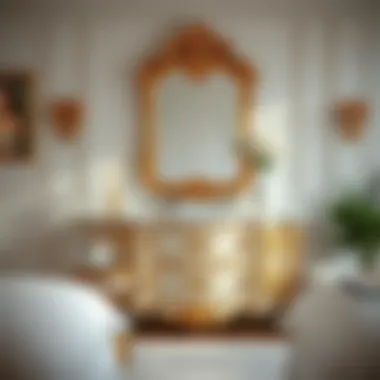
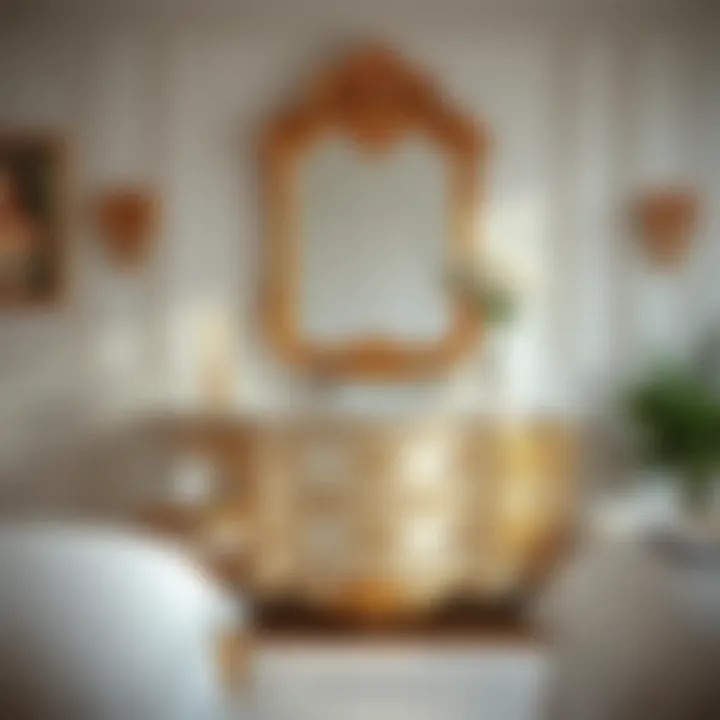
Functionality and Ergonomics
When looking into baroque bedroom furniture, the fusion of functionality and ergonomics is not merely an afterthought; it's a necessity that elevates the design into the realm of practicality and comfort. The ornate details and striking visual appeal of baroque pieces can easily distract from their utility. However, a successful baroque bedroom is one where lavish aesthetic meets everyday usability.
Practicality Meets Aesthetics
Baroque furniture isn't just about showboating; it serves a purpose, blending beauty with usefulness. For instance, a grand four-poster bed may dazzle the eye, but it also provides sturdy support and a sense of enclosure that fosters comfort during sleep. This duality can be seen in several elements:
- Storage Solutions: A baroque dresser adorned with intricate carvings can hold an ample amount of clothing, combining elegance with practicality. Hidden drawers often act as quiet keepers of jewelry and keepsakes.
- Seating Arrangements: Take a chaise longue, its graceful curves supporting the body in a restful position while facilitating elegant conversations. The functionality of seating in a grand setup shouldn’t be overlooked. Choosing pieces that invite relaxation without sacrificing style is essential.
- Lighting Fixtures: Chandeliers and wall sconces not only illuminate but also become focal points of the room, adding a layer of depth and allure. They highlight the craftsmanship that defines the baroque era, ensuring that even the light serves a functional role in accentuating beauty.
"Combining style with practical use is what makes baroque furniture timeless. It's an art that embraces both form and function."
Space Optimization
When it comes to arranging baroque bedroom furniture, space optimization is a crucial consideration, especially in modern homes that might not boast the expansive dimensions typical of baroque-era mansions. Designers need to strike a delicate balance, ensuring that opulence does not lead to overcrowding or claustrophobia.
Here’s how to effectively optimize space within this style:
- Scale Matters: Select furniture items that fit the dimensions of your room. A massive, ornately decorated armoire can overwhelm smaller spaces. Choosing pieces that aren't diminutive, nor excessive, ensures that each item serves a purpose while also aligning with baroque grandeur.
- Arranging with Intent: Positioning furniture strategically to promote flow is vital. Maintaining clear pathways between pieces allows the room to breathe. For example, placing a sizable bed centrally with nightstands on either side allows for accessibility and visibility, creating a balanced look.
- Using Multi-functional Pieces: Incorporating items that serve various functions is vital. Look for a beautiful bench at the foot of the bed that can double as storage, or consider a baroque writing desk that can beautifully serve as a vanity. These considerations maximize usability while maintaining the integrity of the baroque aesthetic.
By zeroing in on these aspects, you can create a baroque bedroom that's not only visually stunning but also remarkably livable. The challenge and joy lie in harnessing the ornate beauty of this style without compromising comfort and practicality.
Incorporating Baroque Elements in Modern Spaces
In today’s world, where sleek lines and minimalism reign, incorporating baroque elements into modern spaces can create a striking contrast that adds depth and sophistication. The juxtaposition of extravagant baroque pieces with contemporary decor can breathe new life into a room, making it not just a space to live in but also a statement of style and personality. Understanding how to blend these two worlds informs better design choices that resonate with both historical appreciation and modern practicality.
Mixing with Contemporary Decor
Balancing Styles
The art of balancing styles is crucial when blending baroque elements into a modern setting. A key characteristic of this approach lies in achieving harmony between the ornate and the sleek. For instance, pairing a luxurious baroque chandelier with a simple, monochrome table can create a focal point that enhances both pieces. This balancing act is beneficial because it allows the grandeur of baroque furniture to shine without overwhelming the visual landscape. A well-balanced space feels curated, not cluttered.
While the advantage of this method is enhanced visual interest, one must tread carefully; too much extravagance can overpower more subdued elements, resulting in a chaotic atmosphere.
Accent Pieces
Accent pieces play a significant role in incorporating baroque style without full commitment. These could range from a richly upholstered ottoman to a gilded mirror hanging on a minimalist wall. The beauty of accent pieces lies in their ability to introduce baroque elements subtly, thereby enriching the space's character without dominating it. A key characteristic of using accent pieces is their versatility; they can easily be swapped out or modified. Baroque accent pieces add a hint of opulence while still allowing the surrounding modern elements to breathe.
However, opting for low-quality replicas can hinder the intended allure, as the authenticity of the materials significantly contributes to the overall effectiveness of the style.
Scale and Proportion
Scale and proportion are essential considerations when incorporating baroque elements in modern spaces. A grand baroque bed frame might look fantastic in a spacious room but could overshadow a smaller space, making it feel cramped. The geometry of the baroque design, with its dramatic shapes, must be matched with the room’s scale to maintain comfort and functionality. This is advantageous, as the right scale can retain elegance without sacrificing livability. A unique feature of thoughtful scale and proportion is that it allows the baroque elements to resonate visually while enhancing the overall balance of the room. However, if not done carefully, a piece that is too large or small can disrupt the intended aesthetic, turning an inviting space into one that feels disjointed or uncomfortable.
Focal Points in the Bedroom
When considering how to integrate baroque elements, it’s also vital to think about focal points within the bedroom. Baroque designs thrive on creating a sense of drama and allure, which can effectively be utilized in key furniture pieces.
Bed Frames
The bed frame sets the tone for the entire bedroom. A baroque bed frame, characterized by its intricate carvings and luxurious materials, can evoke a sense of grandeur that isn’t easily matched by simpler designs. This makes it a popular choice for those looking to make a statement. The unique feature of a baroque bed frame lies in its ability to transform the mundane into the magnificent. However, its bold presence can dominate a minimalist space, so it’s essential to carefully assess the overall design before commitment.
Dressers
A baroque dresser can be more than just a storage solution; it becomes a conversation piece. These dressers, often adorned with elaborate details and rich finishes, can serve both functional and aesthetic roles in the bedroom. The standout characteristic of a baroque dresser is its artistic craftsmanship, often featuring delicate woodwork or gilded finishes. This makes it a significant addition for individuals desiring a touch of sophistication.
Nonetheless, its size and opulence can require a larger space to shine fully. In cramped quarters, a baroque dresser may create an unintended sense of clutter if not placed correctly.
Nightstands
Nightstands hold a crucial yet understated role in bedroom design, often acting as the finishing touches that complete the look. Baroque-style nightstands can introduce lavish details beside the bed, making them functional yet ornate. Their tall stature and intricate designs provide the perfect balance between beauty and utility. A key characteristic of baroque nightstands is their eye-catching designs, which can complement or contrast with the bed frame to enhance visual interest. That said, it's important to ensure that their design does not clash with the overall decor of the room. If the nightstand does not harmonize with the surrounding furniture, it may detract from the objective of seamless incorporation of baroque style.
Customization and Personal Expression
Customization in baroque bedroom furniture is crucial. It allows homeowners not only to express their individual taste but also to mesh the ornate luxury of baroque style with aspects of their own life. Each piece can reflect the owner’s personality through tailored designs and unique finishes. People often want their personal spaces to feel like home, with furniture that speaks to their aesthetic and comfort preferences.
Tailoring Designs
When it comes to tailoring designs for baroque bedroom furniture, one of the main attractions is the flexibility it offers. Each piece can be modified to meet specific needs, whether it is a bed frame or a dresser. For instance, customizing the size and shape of furniture helps accommodate different room layouts and personal functions. Not only does this cater to unique space constraints, but it also roots the furniture in the owner's lifestyle.
Furthermore, the intricate details that can be added during the customization process only heighten the allure of baroque pieces. For example, modifying the carvings or selecting specific leg styles can drastically affect the overall look and feel of the furniture. This way, a homeowner can ensure their baroque bedroom furniture doesn’t just blend in; instead, it stands out as a centerpiece that tells a story of personal charm and elegance.
Personalized Finishes
Personalized finishes enhance the individuality of baroque furniture, making it truly one of a kind. Homeowners can choose various paint techniques and upholstery options to ensure that their pieces resonate with their personal style.
Paint Techniques
Paint techniques play a pivotal role in the customization process. Applying techniques like distressed finishes can evoke a sense of history and nostalgia, creating a piece that feels both classic and personal. On the other hand, a high-gloss or lacquer finish can bring a touch of modernity, enhancing the ornate details of a baroque design.
The versatility of paint techniques is its hallmark; homeowners can experiment with layering colors or even using stencils to enhance designs. This experimentation allows for a playful yet sophisticated approach to decor, indicating a more personality-driven aesthetic.
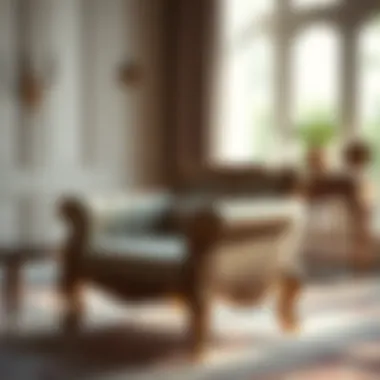
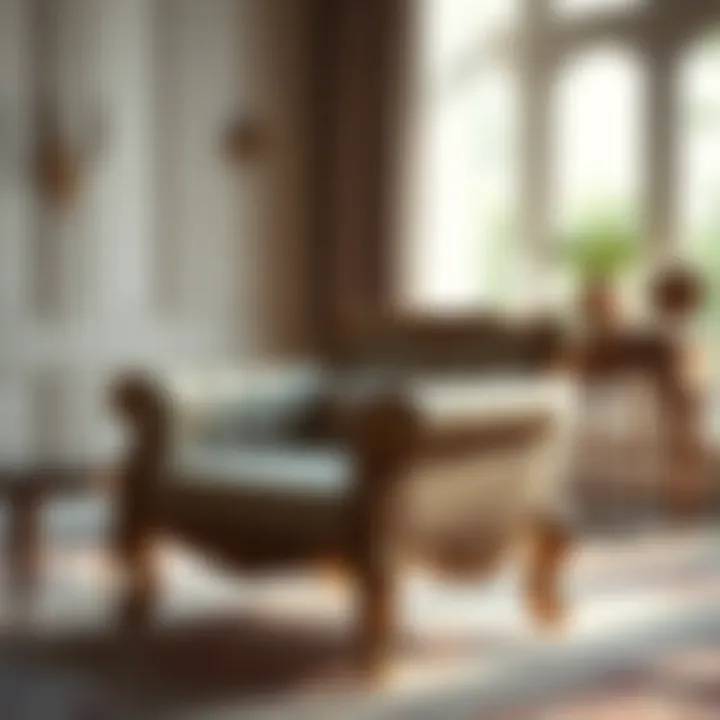
However, it’s worth noting that some paint techniques may require more maintenance. A high-gloss finish, for instance, could show fingerprints more easily than a matte finish. So, it’s all about weighing the visual impact against the practicality of keeping the piece looking sharp over time.
Upholstery Choices
Upholstery choices also form an integral part of customizing baroque bedroom furniture. The fabric you choose can either accentuate the grandeur of baroque design or provide a counterbalance, softening the visual impact. Luxurious fabrics like velvet or brocade establish a classic baroque look by adding depth and texture, while simpler materials can provide a refreshing take on the traditional style.
The unique advantage of varied upholstery lies in comfort. A plush fabric can invite relaxation, encouraging the use of the furniture daily, while sturdier materials might be better suited for accents or decorative pieces. However, these choices should be considered carefully since some fabrics might require special cleaning techniques that could be bothersome for daily upkeep in a home setting.
"Customization isn't just about making something unique; it's about making something that reflects who you are and how you want to live."
In summary, the customization and personal expression within baroque bedroom furniture emerge through tailored designs and thoughtful finish selections. By embracing elements like unique paint techniques and diverse upholstery options, homeowners can craft spaces that resonate deeply with their own identity.
Sourcing Baroque Furniture
Sourcing Baroque furniture is crucial for anyone keen on reflecting this opulent style within their living spaces. With a history tied to grandeur and luxurious craftsmanship, integrating Baroque elements into modern homes can be both rewarding and challenging. Understanding where to find genuine or high-quality reproductions can significantly impact both the aesthetic and authenticity of a Baroque-inspired bedroom.
Unlike contemporary furniture, which can be easily accessible at big-box stores, Baroque pieces require a more discerning eye and possibly a deep dive into markets and sources that specialize in historical designs.
Antique Markets
When it comes to sourcing authentic Baroque furniture, antique markets often serve as treasure troves for unique finds. These markets tend to be bustling, offering a wide array of items that reflect various periods and styles, including Baroque.
- Pros of Antique Markets:
- Cons of Antique Markets:
- Access to genuine pieces that carry history.
- Opportunity to haggle and negotiate prices.
- Unique items that often cannot be replicated.
- May require a keen eye for determining quality and authenticity.
- The search can be time-consuming.
- Availability can be inconsistent.
Visiting antique markets not only allows for the chance to scout stunning Baroque furniture but also immerses one in the culture and conversation surrounding the art of collecting. Many find that the stories shared in these spaces enrich their understanding and appreciation of their finds.
Reproductions and Modern Production
The market for reproductions and modern production has grown substantially in recent years, making Baroque designs more accessible to the average consumer. These reproductions often blend traditional techniques with modern manufacturing methods, offering quality without the hefty price tag.
- Benefits of Reproductions:
- More affordable than original antiques.
- Often have enhancements for today’s ergonomics and functionality.
- Wider availability online and in stores.
However, it’s wise to be cautious. Not all reproductions are built to the same high standards, and some may lack the detailed craftsmanship that signifies true Baroque style.
Finding a reliable source becomes key, and researching reputable dealers who specialize in historical styles can make all the difference. Always inquire about the materials and methods used in reproduction furniture as this can greatly affect longevity and appearance.
Custom Builders
For those seeking a personalized touch, commissioning a piece from custom builders can be an exciting avenue. This allows individuals to co-create a statement piece that aligns perfectly with their vision of a Baroque bedroom.
- Benefits of Custom Builders:
- Tailored designs that meet specific spatial requirements.
- Opportunity for high-quality materials carefully selected by the buyer.
- Strong connection to artisans, facilitating discussion of style and need.
It’s essential to conduct due diligence and choose builders with proven expertise in Baroque styles. Checking previous work, reading reviews, and verifying credentials can help ensure the final product matches the buyer's expectations.
In summary, the journey of sourcing Baroque furniture is multifaceted. By balancing a mix of antique hunting, exploring reproductions, and engaging with custom builders, one can create an environment that celebrates the timeless elegance of this historical style.
Exploring the diversity of sources fuels not only the search for unique pieces but also a deeper appreciation of the rich narrative woven into each Baroque item.
This well-rounded approach ultimately enables individuals to curate a bedroom that resonates with both classic sophistication and modern practicality.
Care and Maintenance
The longevity and beauty of Baroque bedroom furniture heavily rely on proper care and maintenance. Investing in such luxurious pieces is not just about the initial purchase; it encompasses an ongoing commitment to preserving their elegance. In this section, we delve into the essential practices that ensure your Baroque furniture not only maintains its aesthetic appeal but also continues to stand the test of time.
Cleaning Techniques
When it comes to cleaning Baroque furniture, gentle is the name of the game. Harsh chemicals can wreak havoc on the intricate finishes and beautifully crafted details. Here are some approaches you might consider:
- Damp Cloth Wipe: A soft, lint-free cloth dampened with water is often enough. Wipe down surfaces to remove dust and dirt, making sure not to soak the fabric or wood.
- Mild Soap Solution: For tougher grime, mix a few drops of mild soap with water. After applying, rinse the cloth to remove soap residue and dry the surface immediately.
- Avoid Abrasives: Stay clear of scouring pads or harsh scrubbers. They can leave scratches that ruin the glossy finish. Instead, use soft sponges or cloths.
- Natural Oils: For varnished wood, the occasional application of natural oils can enhance shine and provide a protective barrier. Just maybe avoid the heavy-duty stuff if you’re not looking to turn your furniture into a grease trap!
Preserving Finishes
Maintaining the rich finishes of Baroque furniture involves a bit more than regular cleaning. Here are key considerations to keep in mind:
- Temperature and Humidity Control: Wood is sensitive to fluctuating temperatures and moisture levels. Aim for a stable environment—avoid placing furniture near heating vents or overly humid areas, as these can warp the wood.
- Regular Polishing: Using furniture polish designed for fine wood can help maintain gloss and protect against wear. Apply it sparingly using a soft cloth and buff to a shine.
- Avoid Direct Sunlight: Prolonged exposure to sunlight can fade finishes over time. Consider using sheer curtains which allow light while providing some degree of protection.
- Coasters and Place Mats: When placing items on your furniture, it pays to use coasters for drinks and place mats for decorative items. This helps to minimize stains and scratches, preserving both appearance and functionality over time.
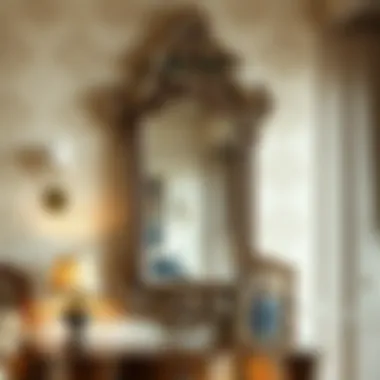
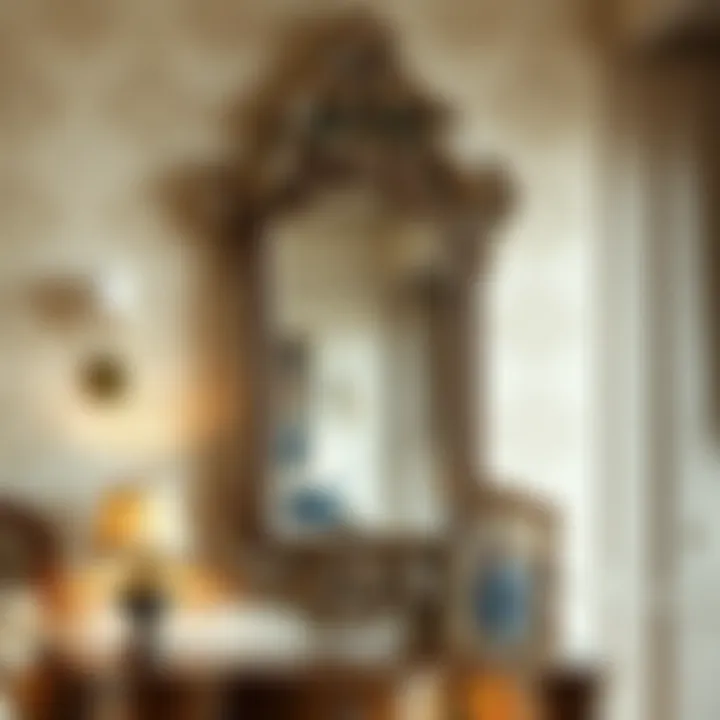
"Investing time in maintaining Baroque furniture is like nurturing a piece of art; it deserves every ounce of care to remain a treasure in your home."
By adopting these cleaning techniques and preservation strategies, you will not only protect your investment but also enhance the timeless beauty of your Baroque bedroom furniture. A little extra attention can make all the difference, warranting your pieces as proud amenities for years to come.
The Future of Baroque Furniture
The future of Baroque furniture presents a fascinating dialogue between tradition and innovation. As interior design continues to evolve, the relevance of Baroque elements is gaining momentum, particularly among those looking to infuse their spaces with history and elegance. This section dives into the revival of Baroque trends and the increasing focus on sustainability, positioning these ornate designs not just as relics of the past but as viable choices for the modern home.
Trends in Revival
The resurgence of Baroque style can be attributed to a variety of factors. First, there is an insatiable desire for individuality in home décor. Many people are moving away from minimalism and seeking ways to express their personality through design. The bold, intricate details typical of Baroque furniture naturally lend themselves to creating striking focal points in any room.
Key trends in this revival include:
- Mixing Eras: Homeowners are blending traditional Baroque pieces with contemporary furniture to create unique contrasts that celebrate both styles. This fusion can create a visually stunning environment where history speaks to modernity.
- Focus on Craftsmanship: There’s a renewed appreciation for handmade items. Artisans are reviving traditional techniques to produce Baroque-style furniture, making each piece a beautiful testament to skill and artistry.
- Personalization and Customization: Sourcing custom-made Baroque elements tailored to individual taste is becoming more common, allowing homeowners to create spaces that are intimately connected to their personal narratives.
Sustainability and Ethical Sourcing
Sustainability is a hot-button issue across all facets of design, and Baroque furniture is no different. With growing awareness of environmental impact, ethical sourcing is gaining traction among consumers. Many are now looking to integrate Baroque designs made from reclaimed or responsibly sourced materials into their homes. This trend is significant for several reasons:
- Environmental Preservation: Choosing sustainably sourced materials, such as reclaimed wood, helps conserve our natural resources. It allows for the exquisite aesthetics of Baroque designs without compromising integrity toward the environment.
- Supporting Local Artisans: Many furniture makers committed to sustainability produce Baroque-inspired items in small batches. By purchasing these pieces, homeowners contribute to local economies and preserve artisanal craftsmanship.
- Longevity of Design: Baroque furniture offers timeless quality that can withstand the test of time. Investing in well-made pieces means they can become heirlooms, further justifying their place in an eco-conscious home.
“In a world where trends come and go like the wind, Baroque furniture holds its ground as a lasting testament to artistry and the importance of sustainability.”
The future of Baroque furniture isn’t just about style; it’s about marrying elegance with a sense of responsibility. As these trends continue to progress, homeowners can expect to see more stunning Baroque elements appearing in refined, contemporary spaces.
Creating a Baroque-inspired Space
Creating a Baroque-inspired space is not just about decorating with furniture; it’s crafting an entire experience rooted in history and luxury. This style evokes feelings of grandeur and artistry, transforming a simple bedroom into a sanctuary that narrates stories of lavish lifestyles and intricate designs. The beauty of Baroque furniture lies in its attention to detail and dramatic aesthetics. When integrating these elements into modern spaces, one must consider several factors, such as layering textures, complementary décor, and lighting solutions to ensure that the essence of Baroque is preserved while fitting seamlessly into contemporary living.
Layering Textures
To create a genuine Baroque-inspired space, layering textures is a key ingredient. Think rich, velvety fabrics alongside smooth silks, intricate lace with robust brocade. These combinations not only serve to deepen the aesthetic experience but also add depth to the visual palette. Imagine placing a sumptuous velvet bedspread over a silk sheet. Or pairing a brocade upholstered chair with a fine woolen throw. It’s these contrasting yet harmonious textures that breathe life into the room, inviting touch and engagement. The tactile experience can make the space feel more inviting, supporting the idea that comfort does not have to compromise on elegance.
Choosing Complementary Decor
Choosing the right complementary decor is paramount for achieving the right atmosphere. Opt for pieces that echo Baroque themes without being overpowering. This could include artworks that feature ornate frames or sculptures reminiscent of classical motifs. Mirrors with gilded finishes can amplify not just light but also the sense of space, making a room appear more expansive. Decorative elements like tapestries, intricate rug patterns, or even Baroque-inspired wallpaper can tie the whole look together. The key is balance; choosing decor that enhances the Baroque style without overwhelming other elements will help maintain harmony in the design.
Lighting Solutions
Chandeliers
Chandeliers are more than just light fixtures; they’re statement pieces that define the ambiance of a Baroque-inspired bedroom. The opulence of a chandelier draws the eye and serves as a focal point in any room. Made from crystal or ornate metals, these lighting fixtures reflect light beautifully, creating a warm glow that elevates the overall atmosphere. What makes chandeliers a beneficial choice in this context is their ability to blend functionality with dramatic flair. Beyond mere illumination, they create a sense of occasion, whether in an intimate space or a grand master bedroom.
One must consider the unique character of chandeliers; they vary from simple designs to magnificently complex ones adorned with crystals or intricate motifs. However, it’s important to keep in mind their size and scale within the room. A chandelier too large can overpower, while one that’s too small can seem lost. Thoughtfulness in this choice will enhance rather than detract from the Baroque aesthetic.
Wall Sconces
Wall sconces present another exquisite lighting solution that complements Baroque design while adding layers of light to a space. Their elegance lies in their wall-mounted design, showcasing artistic form. Often fashioned from brass or aged bronze, they offer a different kind of charm compared to chandeliers. The key characteristic of wall sconces is versatility; they can be positioned for ambient lighting or as accent pieces to highlight decor elements or artwork.
These sconces add a soft, diffused light, thus creating depth and introducing additional dimensions to the room. Their unique feature is the ability to provide focused light in corners or around mirrors, enhancing the design's grandeur while maintaining an intimate atmosphere. However, care should be taken to choose sconces that properly harmonize with other lighting sources and the surrounding decor to avoid a mismatch that can interrupt the flow of the design.
In essence, every element in a Baroque-inspired space—textures, decor, and lighting—works toward creating an atmosphere that speaks to the heart of luxury.
Whether layering textures, selecting complementary decor, or choosing suitable lighting, each decision plays a pivotal role in curating a space that reflects the extravagant yet thoughtful philosophy characteristic of Baroque furniture.
Ending
As we wrap up this exploration, it’s clear the significance of the Baroque style lies beyond mere aesthetics. The world of Baroque bedroom furniture is a realm where history, artistry, and modern living intersect. It captures a time when craftsmanship was not only a trade but an art form, reflecting success, power, and taste.
Timelessness of Baroque Style
Baroque furniture embodies a timeless allure. Its designs are not confined to the centuries in which they originated. Instead, they continue to resonate with those seeking to create spaces filled with character. The decorative richness and emotional depth of Baroque elements can evoke feelings of nostalgia and grandeur in any bedroom setting. The curves, intricacies, and sumptuous materials used in Baroque pieces create a sense of history and richness that few modern furniture styles can match.
These pieces can seamlessly coexist with contemporary elements, emphasizing their versatility. For instance, combining an antique Baroque dresser with sleek, modern decor can create a striking contrast that enhances both the vintage charm and contemporary convenience of the space.
Personal Reflection on Design Choices
When one opts for Baroque furniture, it transcends simple decorating. It invites personal expression and storytelling into one’s home. The complexity of these designs encourages thoughtful consideration—what does each piece mean to you? Perhaps a tufted velvet armchair becomes a cherished reading nook, or an ornately carved bed frame becomes the centerpiece for cherished memories.
When selecting Baroque elements, it’s essential to reflect on how these choices will bring personal joy while enriching the environment. It's about finding that perfect harmony between the opulence of Baroque and the personal aesthetic you want to convey.
Final Thoughts
"The interior of any home embodies the narratives of its inhabitants; in this, Baroque furniture seizes the opportunity to tell tales of beauty, history, and personality."
Through careful selection and personal expression, anyone can forge a connection with this historical style, transforming a bedroom into a lush narrative of comfort and elegance.
[For further reading on the principles of Baroque design, you might find resources at en.wikipedia.org and britannica.com useful.]
Moreover, visiting forums and discussions on platforms like reddit.com can provide additional perspectives and tips for incorporating Baroque style into your home.



